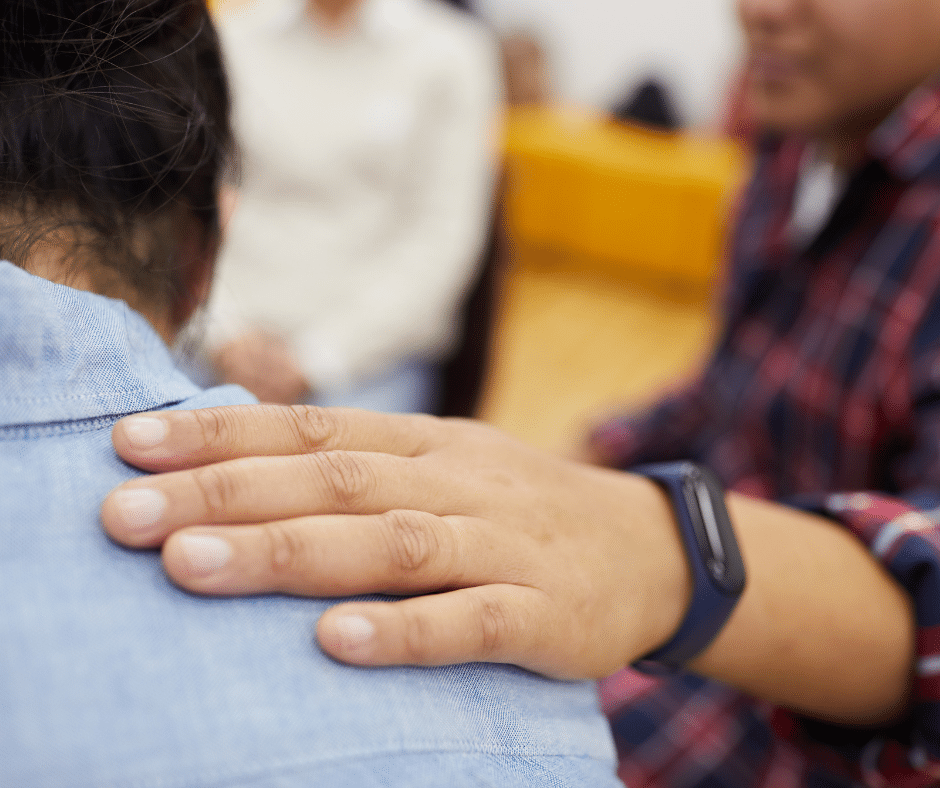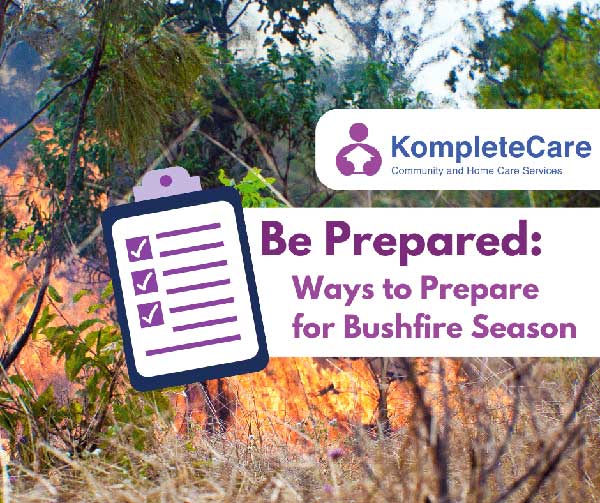Be Prepared: Make a Bushfire Plan
Australia is well-known for its scorching summer temperatures, and with it comes bushfire season. This year’s summer is expected to be hotter than usual, with experts expecting it to be one of our hottest summers yet. This bushfire season is predicted to see an increased risk of fire across the country, and when it comes to protecting your family and home, preparation is essential. This is KompleteCare‘s guide on how to stay prepared and make a bushfire plan.
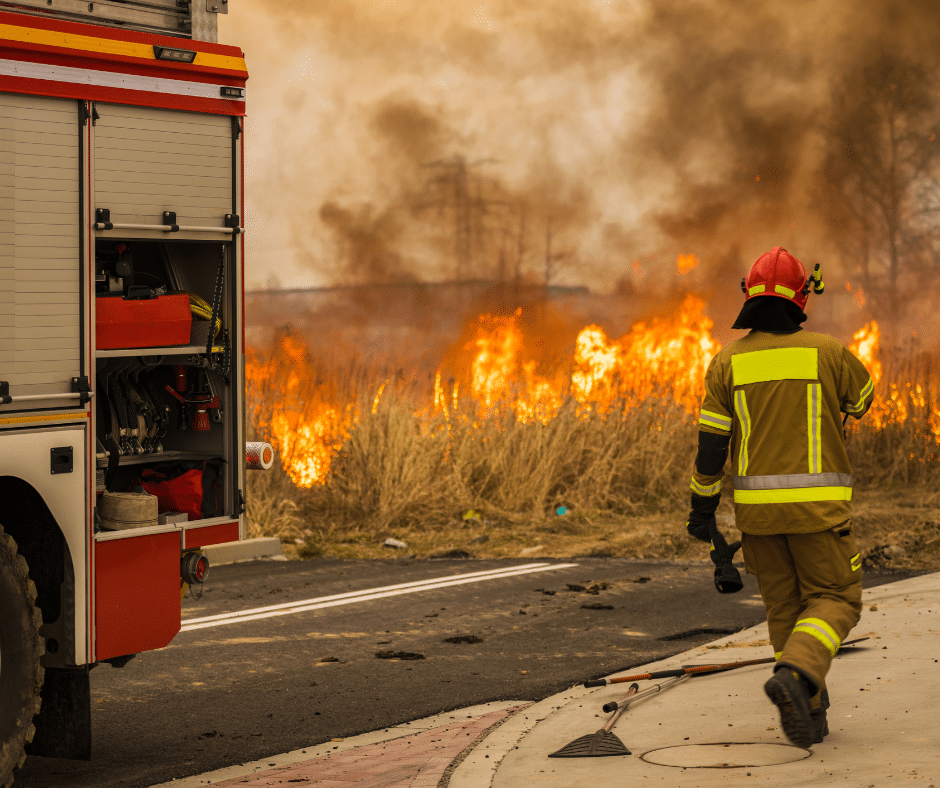
Stay informed
Typically, the Fire Danger Season runs from November through to April in South Australia and Southern Western Australia and June to October in Northern Western Australia. These dates can be subject to change and may extend depending on seasonal conditions, so it’s important to stay up to date on changes and restrictions.
You should also make note of Fire Danger Ratings for your local neighbourhood as well as any areas you are travelling to or through. Fire Danger Ratings tell you how dangerous a fire would be if one started; the higher the rating, the more severe a bushfire is expected to be.
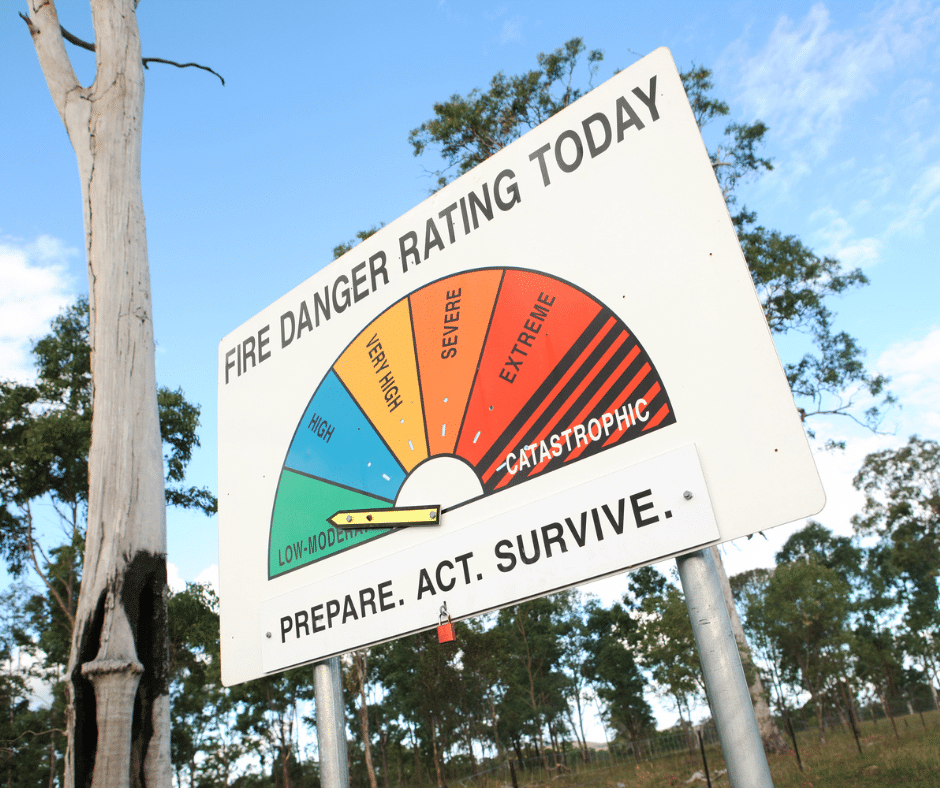
If you live or work in an area where bushfires may occur, you should also know your nearest Bushfire-Safer Place in case you need to relocate. Bushfire Safer Places are suitable for use during bad fire weather or during a bushfire. For South Australians, you can find your Bushfire Safer Place here on the Country Fire Safety website. For Western Australians, plan where you can go in the event of a bushfire here on the Department of Fire & Emergency Services website.
Keep your home well-prepared
Plan ahead and ensure you keep your home and property well-prepared and maintained during bushfire season and throughout the year. One way to do this is to clear the areas surrounding your home.
Make sure to remove any fallen or dead branches, leaves, and undergrowth, especially under trees, and make sure to stay on top of lawn mowing and reduce long grass. Cut back and prune any tree limbs that are hanging over your home or are lower than two metres above the ground.
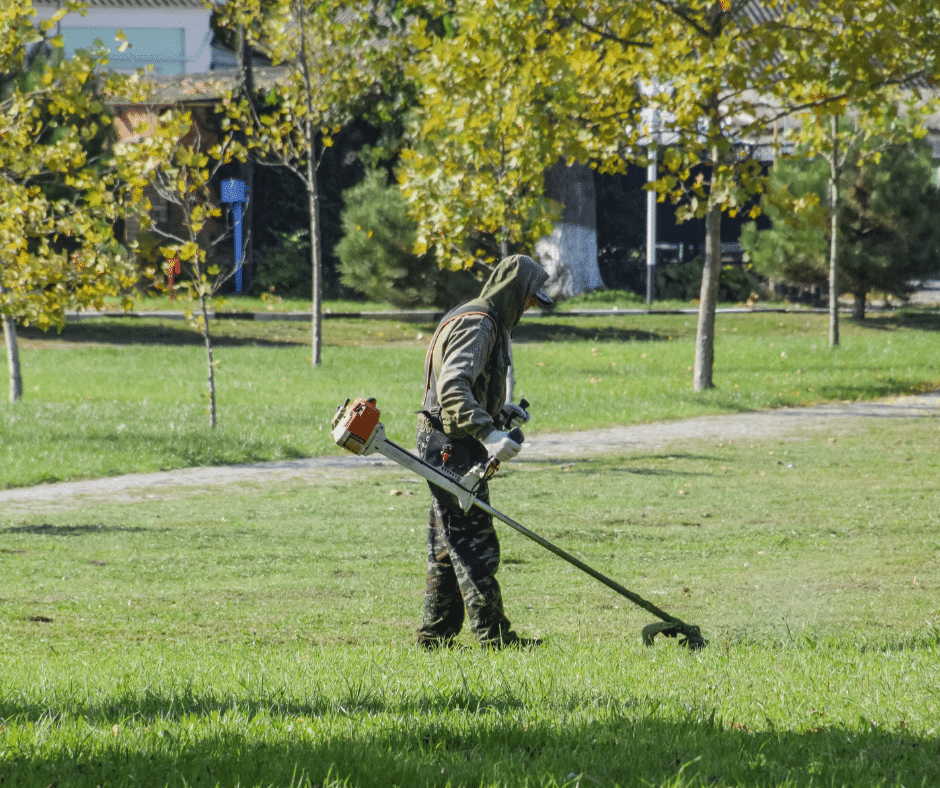
Basically, you need to remove any flammable materials close to your home, sheds, or garages. This includes bark, heavy mulch, paper, boxes and wood piles. It can also be beneficial to install a sprinkler system to wet down your home and garden to lessen the effects of radiant heat, sparks and embers. You should also ensure that you have access to an independent water supply such as tanks, dams, or swimming pools, as you shouldn’t rely on mains water being available in the event of a fire.
Pack an emergency kit
Pack an emergency kit with essentials to help survive a bushfire and keep it in a handy place. A well-packed emergency kit is one that can be used for all hazards and emergencies, not just bushfires.
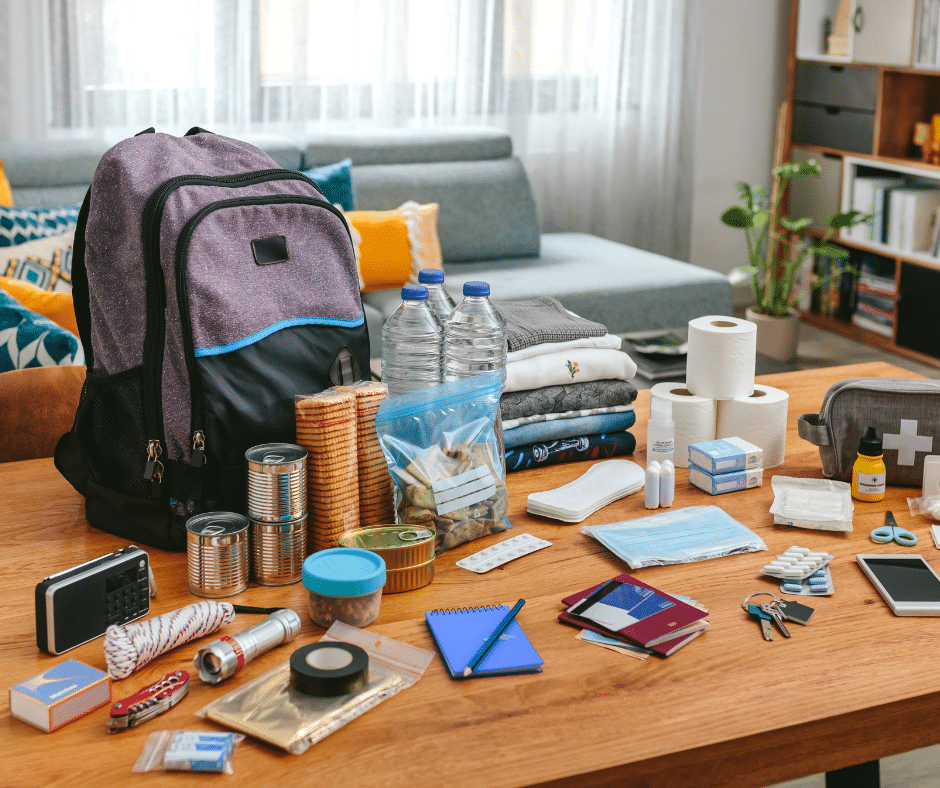
Important items to pack in your emergency kit should include:
- Driver’s licence
- Passport
- Photos
- Jewellery
- Will
- Insurance documents
- Medical prescriptions
- Medicines and a first-aid kit
- Phone charger
- Torch and spare batteries
- Overnight bag with a change of clothes and sanitary supplies
- Food and water
- Woollen blankets
If you have any pets, you should also include any suitable transport carriers or a leash, pet food, any pet medications, and a familiar item such as a toy, bed, or treats to help reduce stress.
To help free up space, it would also be beneficial to scan any important documents and photos onto a USB drive.
Make a bushfire plan
Your safety and survival in the event of a bushfire will depend on how prepared you are and what decisions you make. Making a written bushfire plan will help take the pressure off you and ensure you don’t forget any details.
When making a bushfire plan, you should consider:
- Who your plan will protect, be it yourself, other adults, children, people who need assistance, pets and livestock.
- What you will do in certain circumstances, such as if you’re at work, if pets run away, if children are home alone, if you have guests over, or if your escape route is blocked.
- What key decisions will you make, such as where you’ll go, what you’ll do with your pets, what you’ll take with you, and who you need to keep informed of your movements.
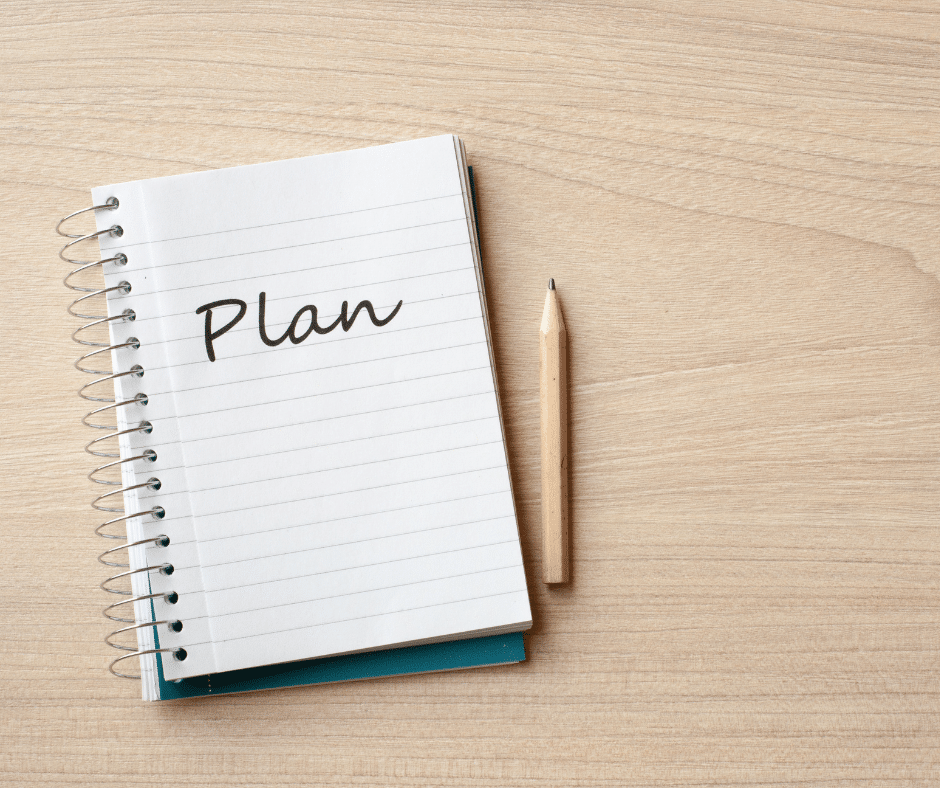
You can make your bushfire plan online using your local fire service below:
- South Australia – CFS 5 Minute Bushfire Plan
- Western Australia – DFES My Bushfire Plan WA
Additional support
In preparation for a worst-case scenario, a well-thought-out plan is always a good idea.
If you have mobility issues, need additional support or live alone, consider including friends, family, neighbours or anyone who lives around you for support in your bushfire plan. Ensure that you have access to appropriate support in the event of an evacuation. If you’re a KompleteCare client and unsure where to start with your bushfire plan, contact your local KompleteCare office or Client Services Manager to discuss your options in the event of an emergency.
